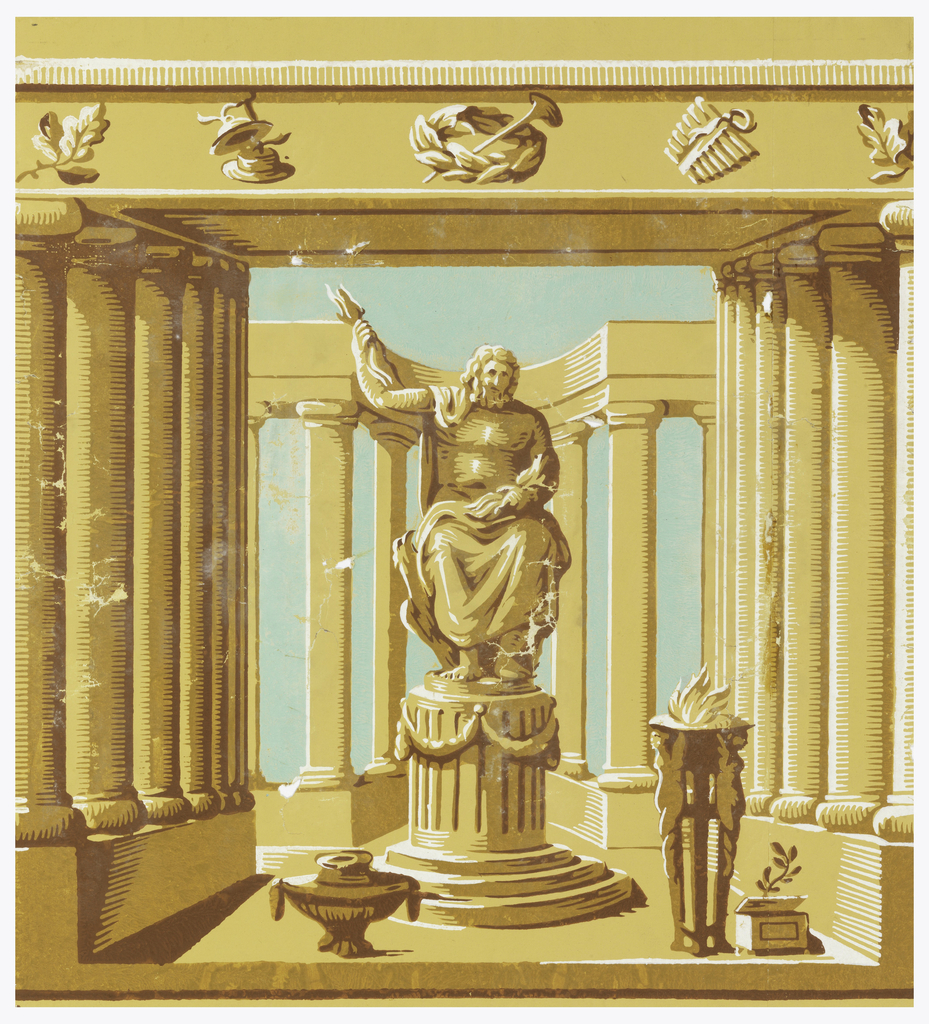This classically inspired wallpaper panel was block printed on handmade paper c.1785-90 in France. Jupiter, king of the Gods of Rome, is rendered in tones of ochre and brown against an aqua background. He sits atop a garlanded pedestal with fists full of thunderbolts, his right arm raised and ready to dispense lightening in the name of justice. Jupiter is framed by rows of receding Doric columns, which open up into yet another columned hallway. Along the top border of the panel, the columns support a frieze decorated with oak leaves (a symbol of Jupiter), musical instruments and what appear to be feathered hats. An urn, a caryatid brazier, and a small box containing a wispy branch occupy the foreground. The overall composition is similar to the “pillar and arch” papers which were popular in Great Britain at the time of this piece’s manufacture.
Often when a panel features strong architectural elements, as this paper does with its plethora of Doric columns, it was meant to be applied to the lower portion of the wall as a “dado.” The architectural images acted as a sort of visual support for the weight of the wall above. However, because the design of this paper also has an open, airy quality to it, it would have been equally appropriate as a “frieze” applied to the upper portion of a wall. Creating a versatile design that could be used to cover both tops and bottoms was certainly a clever move for a manufacturer looking to increase his market.
Anna Rasche is a student in the History of Decorative Arts & Design graduate Program at the Cooper Hewitt, and is a Master’s Fellow in the Wallcoverings Department.
